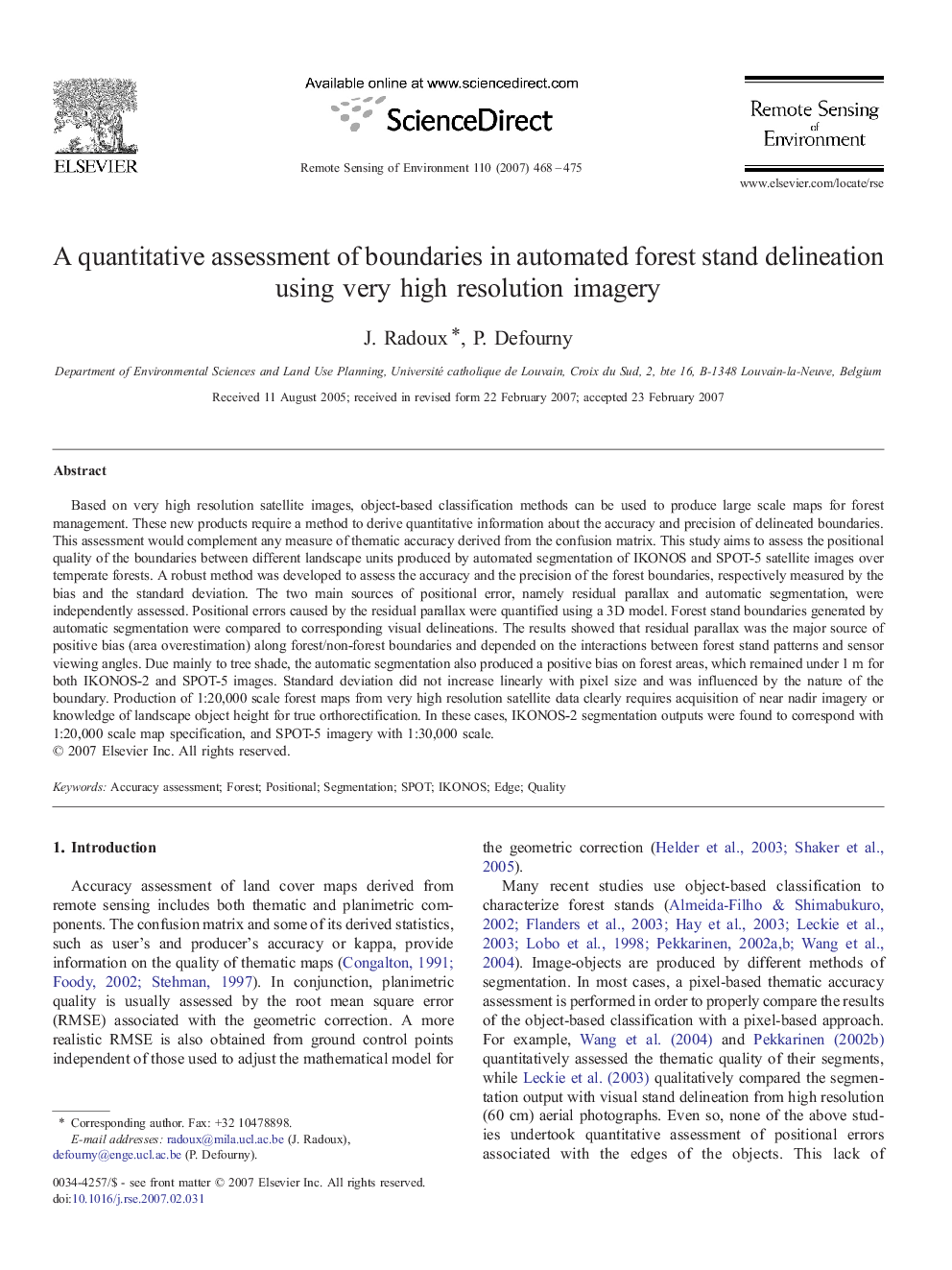| Article ID | Journal | Published Year | Pages | File Type |
|---|---|---|---|---|
| 4460641 | Remote Sensing of Environment | 2007 | 8 Pages |
Based on very high resolution satellite images, object-based classification methods can be used to produce large scale maps for forest management. These new products require a method to derive quantitative information about the accuracy and precision of delineated boundaries. This assessment would complement any measure of thematic accuracy derived from the confusion matrix. This study aims to assess the positional quality of the boundaries between different landscape units produced by automated segmentation of IKONOS and SPOT-5 satellite images over temperate forests. A robust method was developed to assess the accuracy and the precision of the forest boundaries, respectively measured by the bias and the standard deviation. The two main sources of positional error, namely residual parallax and automatic segmentation, were independently assessed. Positional errors caused by the residual parallax were quantified using a 3D model. Forest stand boundaries generated by automatic segmentation were compared to corresponding visual delineations. The results showed that residual parallax was the major source of positive bias (area overestimation) along forest/non-forest boundaries and depended on the interactions between forest stand patterns and sensor viewing angles. Due mainly to tree shade, the automatic segmentation also produced a positive bias on forest areas, which remained under 1 m for both IKONOS-2 and SPOT-5 images. Standard deviation did not increase linearly with pixel size and was influenced by the nature of the boundary. Production of 1:20,000 scale forest maps from very high resolution satellite data clearly requires acquisition of near nadir imagery or knowledge of landscape object height for true orthorectification. In these cases, IKONOS-2 segmentation outputs were found to correspond with 1:20,000 scale map specification, and SPOT-5 imagery with 1:30,000 scale.
